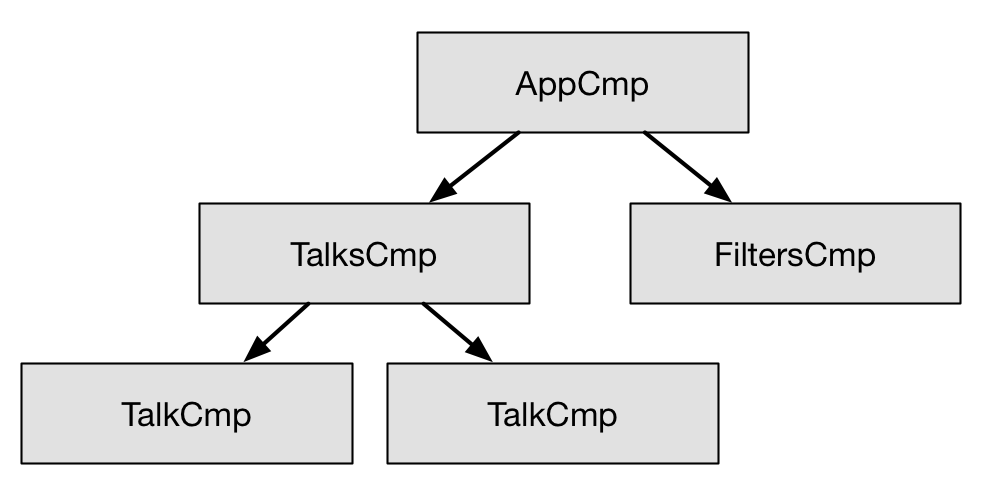Two phases
Angular separates updating the application model and reflecting the state of the model in the view into two distinct phases. The developer is responsible for updating the application model. Angular via bindings, by means of change detection, is responsible for reflecting the state of the model in the view. The framework does it automatically on every VM turn.
Event bindings, which can be added using the () syntax, can be used to capture a browser event or component output to execute some function on a component or a directive. So they often trigger the first phase.
Property bindings, which can be added using the [] syntax, should be used only for reflecting the state of the model in the view.
As we have learned, an Angular application consists of nested components, so it will always have a component tree. Let's say for this app it looks as follows:

Next, define the application model...



























































